
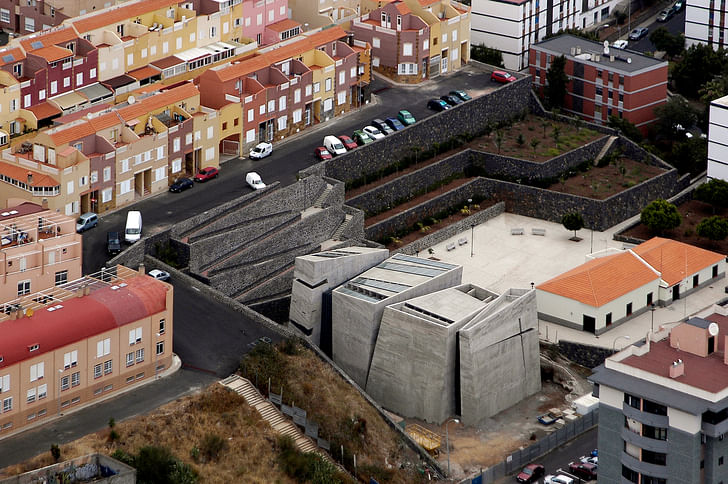
Some 100 kilometers off the coast of Morocco, the Canary Islands are an archipelago of islands and autonomous community of Spain. Tenerife, the largest island, has a population of just under 900,000 people—the vast majority of whom are Catholic. It’s no surprise, therefore, that the island has a fair share of churches and cathedrals, including the historic La Laguna Cathedral, built at the beginning of the 20th century in a syncretic mix of styles including Neoclassical and Neo-Gothic. Not too far away (about 4km) sits the Holy Redeemer Church, built in 2012 by Menis Arquitectos—a wildly different approach to ecclesiastical architecture, but just as impressive.
In line with this month’s thematic focus on the architecture of Faith, we talked to Menis Arquitectos about the design of the church, and the kind of experience they hoped to create for parishioners and visitors.
What were the initial parameters for the project?
The project was conditioned by a series of situations that stayed with us during the process. First of all there was an urgent need for the local community to get a social and confessional centre. At the same time, the Bishopric of Tenerife did not [have already] enough funds for the entire building; the money would arrive progressively year after year. Thus, our main concern there was finding a design solution that would have enabled us to build and deliver the project in stages, so that the community could start using parts of the building as soon as possible. Another major factor we had to deal with is the large slope of the plot and its rocky bed. Finally, the building is set in a socially and economically depressed neighborhood, so we wanted to create a beacon, something the community could identify with and be proud of.We designed contrasts between dark and light that invite you to a visual journey
What was the experience you hoped to create for visitors?
We wanted to create an archetypal space and a sense of a mystical experience. We designed contrasts between dark and light that invite you to a visual journey; between compression and liberation that invite you to a deep exhalation; between rough textures that invite you to touch and soft acoustics that invite to whisper. The result is a place, which, from the outside, looks like a secure shelter and, once inside, receives you with austere kindness and mysterious sensations.

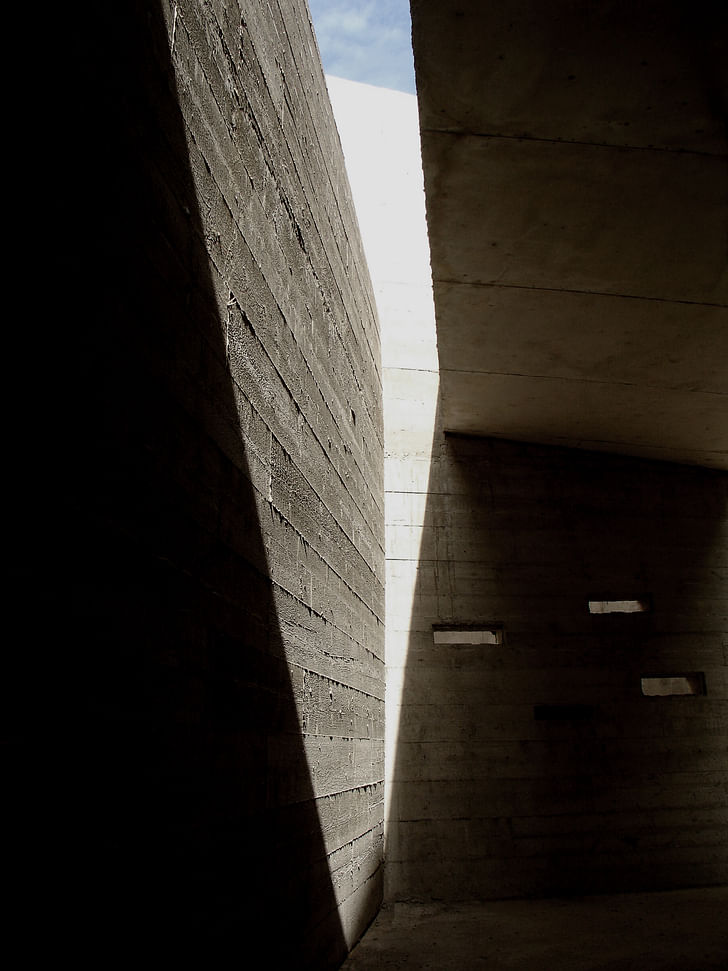
The Church has a heavy, Brutalist-esque design. Can you explain the decision behind this? Why did you choose concrete as the primary material?
We live on a volcanic island, which means we live on a rock—better told, on rocks. It's there and we cannot ignore it and if you dare to forget about it, El Teide, the majestic peak, is there to remind you. Our design and the materiality of our buildings are impregnated with it: the heavy volumes, the cuts and the cracks, the rough textures, the colors...the concrete, the way we work with it, is just a marvelous tool
And the concrete, the way we work with it, is just a marvelous tool. We chose to exploit its properties, based on its isotropic nature and energy efficiency, optimized by the thermal inertia of the walls. The building has good acoustics thanks to a combination of the concrete and the local volcanic stones (picón), which is manually broken afterwards. The result is an expressive rough finish with a degree of sound absorption superior to conventional concrete. We further developed this mix for the Cultural and Congress Centre Jordanki in Poland. It is essential for the acoustic system of the Concerts Hall. It is actually certified as a new material, under the name "picado".
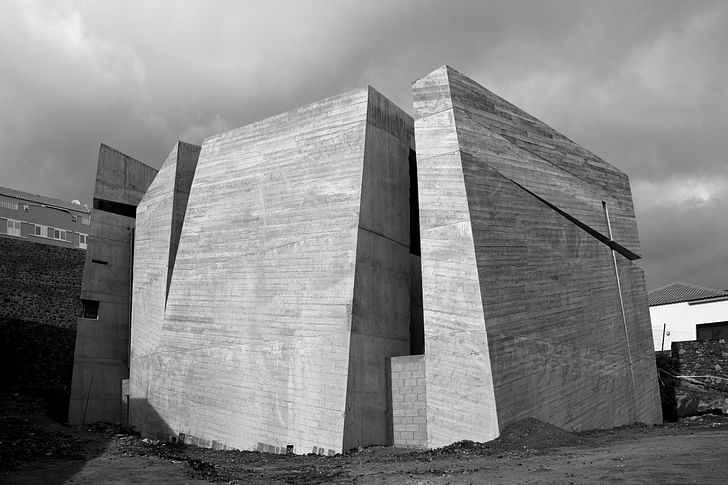
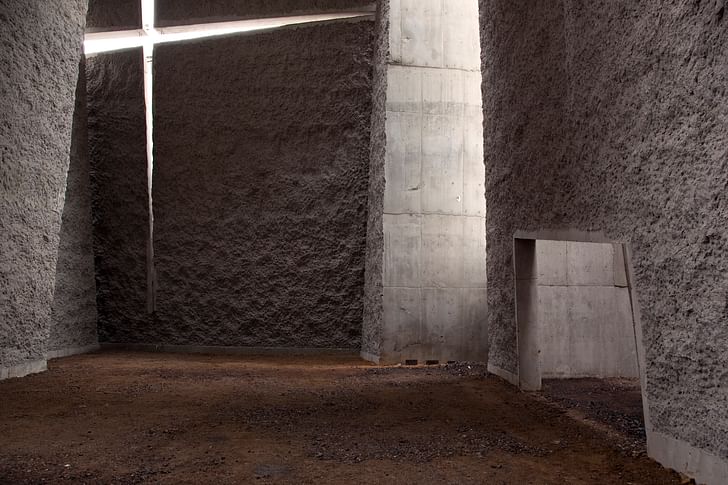
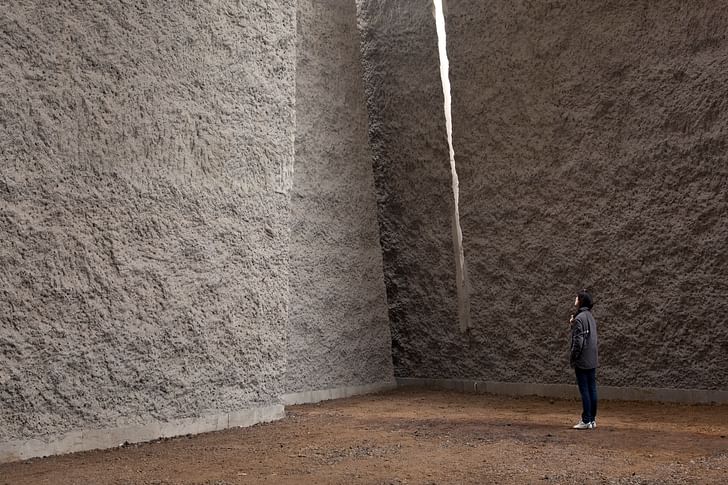
Is there any symbolism to the design?
This is very complex to answer with precision because I am sure there are many symbolisms I was not aware of when designing the project. But for sure we wished to respond to the name and significance of this Church, the way the client conceived it. The Church's name is actually "La Iglesia del Santísimo Redentor" (The Church of the Holy Redeemer), and the Bible reads: "Once again, Jesus spoke to the people and said, ‘I am the light of the world’.” This is an essential statement in the Christian religion.Light becomes suddenly almost material, tangible
There is a dramatic play between light and dark spaces in the Church. How was this created and why?
Light only comes in the Church through narrow cracks between the heavy volumes and through the cross. Windows would distract from that sense of a mystical experience we wished to create. Light becomes suddenly almost material, tangible—a presence. You can almost feel it.
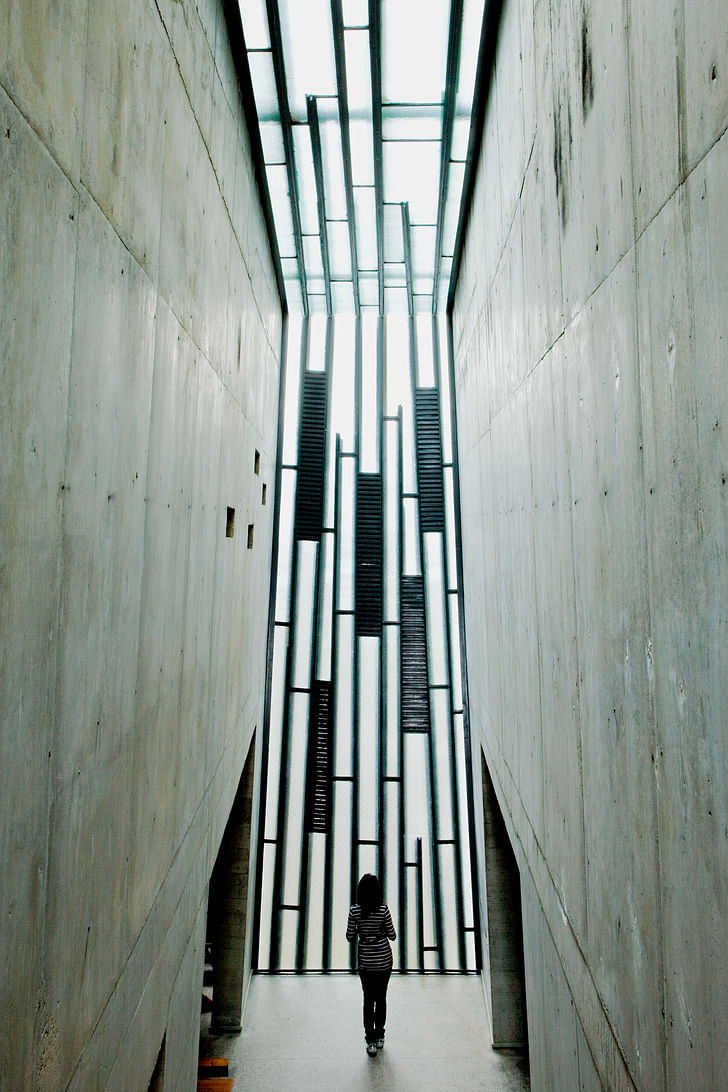
Interested in other religious architecture? Check out more special features from our December theme, Faith.
Check out models, sketches, and diagrams of the church in the image gallery below.
Writer and fake architect, among other feints. Principal at Adjustments Agency. Co-founder of Encyclopedia Inc. Get in touch: nicholas@archinect.com
No Comments
Block this user
Are you sure you want to block this user and hide all related comments throughout the site?
Archinect
This is your first comment on Archinect. Your comment will be visible once approved.